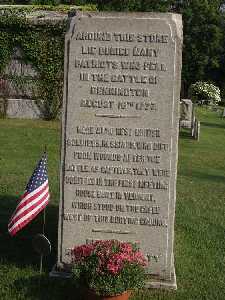
Charles was born in the
Town of Westerly, Kings Co., R.I. On April 13, 1737 to parents George and Susannah
Deake. When his father died the family farm was willed to Charles and his brothers
Edward and George. Charles and his brother George may have left for Stonington,
Conn. when their mother moved in Nov. 28, 1748 or to live with their sister
Thankful or Susannah, both of whom lived in the Town of Stonington, Conn. While
living in Conn. Charles learned the tailors trade. On May 30, 1757, eleven years
after his fathers death, a division of the land to the three boys was recorded
in the Hopkinton Town records (He was living in Charlestown, R.I. at the time).
His brother George sold his portion of their fathers land and John's portion,
which he had purchased earlier, to Charles on Dec. 4, 1759. Eventually the farm
came into the possession of Charles. The description of the location of the
land was: Tract of land lying in Hopkinton in the County of Kings County and
Colony of Rhode Island butted and bounded as follows; beginning at the Southwest
Corner at Cyrus Buttons land at a stake and stones and running on John Hoxeys
land to a stake and stones at Charles Deakes land then running easterly on said
Charles land to a stake and stones at Jacob Halls land then running southerly
to a marked tree at Josiah Hills land then running on Josiahs land to a stake
and stones then running on Cyrus Buttons land to the stake and stones first
mentioned containing twenty one acres & an half more or less. A fine home
in a good state of preservation stands on that land today. One tradition indicates
Charles built this house originally for his bride in 1760. Other information
indicates the home is much older than this (see article on Deake/Dake house
in the previous section). About 1760, he married Anna Gould in Hopkinton, Kings
Co., R.I. (parents unknown). She was a native of the Town of Westerly, Kings
Co.,R.I.; having been born there on May 14, 1741.
In April 2, 1762 along with several neighbors he donated land two rods wide
through their land to start a highway "from highway near Simeon Perry to go
by Quaker Meeting to the colony line". In 1766, the property, then described
as being on Noose Neck Road, was sold to one Abraham Utter and so passed out
of the family.
Between 1774 and 1775 Charles and his wife and three sons moved from Hopkinton,
Rhode Island to the Valley of the Little White Creek and the Walloonsac River
located in what is now White Creek Township, Washington Co., N.Y. Since they
were Baptist Church Members, they probably moved with a group of Baptists from
R.I. who arrived at about the same time and set up a church in this area organized
by Rev. William Waite. (Rev. William Waite built a log church in 1772 at what
is now the intersection of Route 68 and North Hoosick Rd. (Barkers Corners). A Royal Proclamation, by the King of England, in October,
1763 offered generous terms and encouraged expansion, which may have played
a part in their migration, or raids by British troops on farms in this area
of Rhode Island may have been their incentive to move.
Map of White Creek, Washington Co., NY.
With the outbreak of the Revolutionary War, Charles joined the New York Militia,
District of Cambridge, County of Albany. (at this time the area was part of
Cambridge, Albany Co., N.Y. but currently is part of White Creek, Washington
Co., N.Y. The Indian name for the White Creek stream was San Coick) Military
records show that he served in Capt. William Brown's Class, Col. John Blair's
and Col. Van Woert's Regiments of the New York Militia. (The sixteenth Regiment)
The Deakes' lived on a farm adjoining Elder Waites' farm. Elder Waite was the
Minister of the White Creek Baptist Church. Their farms were located just north
of the Von Schoicks' Mill, located on the western bank of the White Creek where
it enters into the Walloonsac River, and on the road between the Village of
White Creek and San Coick (now North Hoosick). It was this Mill that Col. Baum
of the British Forces used for his headquarters immediately before The Battle
of Bennington. It was also down this road that Col. John Williams' Regiment
marched from White Creek to North Hoosick and there met and joined another regiment
from Bennington, Vt. commanded by Col. Warner and defeated the detachment of
British troops sent out to reinforce Col. Baums' Detachment. The following was
documented by Sally Dake Gardner on Feb. 1896. "My father's father name was
Charles Dake and he was the great-great grandfather of the afore-said applicant.
(Carrie O. Dake - D.A.R. Applicant). This Charles Deake, my grandfather, was
a Minuteman and fought for American independence under General Stark at The
Battle of Bennington, Vermont, on August 16, 1777. He died November 11, 1803,
aged sixty four years, six months and twenty days, before I was born. He was
survived by his widow Anna Deake, whom I well remember, and from whom I heard
and learned the particulars of her husbands participation in The Battle of Bennington.
She related them to me when I was a girl. According to her statement at the
time of said battle, they resided in the vicinity of Bennington, and on the
morning of the day of the battle, my grandfather being with Gen. Starks' Command,
she my said grandmother sent their two boys, my father, then fourteen years
old, and his older brother William Deake, then about sixteen years old, to a
mill with a grist of corn to be ground and as they were returning from the mill,
the battle began in their immediate vicinity. When the battle commenced my Uncle
William was frightened and began to cry, but my father swung his hat and cheered.
After the battle my grandmother
went to search for my grandfather and found him in a church in Bennington which
was then in use as a hospital. (The church was the old Congregational Church
which was a wood building that was replaced in 1804-1806. There is a cemetery
next the church which contains the remains of 13 patriots and Hessions who died
in the Church/Meeting House as a result of wounds received during the battle).
(Another record indicates the church she referred to was the Waite's Meeting
House in White Creek and he was wounded with 600 other Hessian prisioners in
the small church.) He was not severely wounded but there were three bullet holes
through his clothing. She went to bring him some water and as she was carrying
it into the church a number of Hessians there begged for the water which she
provided to them. Some history books of the area quote her as being the first
Red Cross volunteer because of her tending to the wounded.

|
|
|
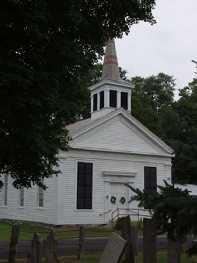
|
|
|
(Information on Rev.
Waite and the White Creek Baptist Church: Rev. Waite and his wife Mary are buried
in the Baptist Church Cemetery in Center White Creek (aka Waite's Corners).
The church is just off Rt. 22 south of Cambridge, Washington Co., NY. The cemetery
is across the road from the Baptist Church and west of Post Corners.) The log
church he had built was burned by the British during the "Battle of Bennington"
(actually Walloomsac, 4 miles NE of Hoosick Falls in Rensselaer Co., NY, not
VT). The following historic marker is no longer there: A log church which stood
here was burned by the British Battle of Walloomsac, Aug. 16, 1777.
It was documented that in the spring of 1786, Charles Sr. his wife and three
sons (William Gould Deake, Charles Deake Jr., and Benjamin Deake) moved to the
Town of Ballstown, Saratoga Co., N.Y.; however, in the diary of Rev. Samson
Occom, a Mohegan Indian minister that Charles knew from Rhode Island, he visited
Charles and his family in the Ballston area on October 17, 1785 on his way to
Brothertown, NY (this is where Occom moved many of the Indian tribes from the
Westerly and Charlestown, RI area), so they probably moved there earlier than
indicated. Rev. Occom also mentioned in this book that Charles Deake was a Separate
Baptist. Their brother John stayed behind in Washington Co. until some time
between 1790 and 1800 and then also moved to Saratoga Co. Recorded in the Saratoga
Co. History: "Near the place was a fine large spring of deliciously cool and
sparkling water and here were found large quantities of bones of animals showing
that some past time it had been used as a camping ground by someone either Indians
or Tories probably during the Revolutionary War." On Mar. 7, 1787, Charles Dake
"Yeoman" of Albany Co. leased 100 acres of land for one year from Adrain Bancker
"Esquire" of Staten Island for five shillings. On Sept. 13, 1787, he purchased
the land from Adrain Bancker. The Deakes' were some of the earliest settlers
to this part of New York. This area, about a mile and a half northeast of Middle
Grove, N.Y., later became known as Daketown. Charles acquired 1500 acres of
land in Saratoga Co., N.Y. during his life time. On March 1794, Charles executed
a promissory note between Simeon Cosell and Ebenezear Allen for 9 pounds.
In 1794 the Second Baptist church of Greenfield was formed at Daketown with Charles Deake Sr. listed as the Church Deacon. (Charles Dake Jr. was also listed as the Deacon when the church was disbanded in 1822. Reverand's. Abel Brown, John Lewis and Timothy Day served this church in the capacity of pastor). To the inhabitants of the vicinity this church was known as the Daketown church and was located about a mile and half northwest of Middle Grove. It was constituted in 1794 and joined the Shaftsbury Association in 1795. It dissolved its connection with that body in 1808 and was finally broken up and disbanded in 1822.
On Nov. 11, 1803 Charles died and was buried in the family cemetery at Daketown.
The Dake Cemetery is located near the southwest corner of the junction of the
Sand Hill Road and the Kayaderosseras Creek Road (County 19). It is about 250
feet beyond a cabin and over looks the creek road from an elevation of about
100 feet. Recorded on Charles' tombstone is the following inscription. "Charles
Deake who departed life Nov. 11, 1803 age 61 years 6 mo. 28 days. ""Reader prepare
to meet thy God" The cemetery is located about a half mile from the Charles
Deake Sr. home. (In 1811 the family formally changed their name to Dake).
Anna continued to live in this area until her death Dec. 2, 1828. She was buried
next to her husband in the Dake Cemetery. The inscription on her tombstone reads:
"In sacred memory of Anna, consort of Charles Deake, who departed this life
Dec. 2, 1828, aged 87 years, 6 months and 18 days. Blessed are the dead that
die in the Lord"
Map of Daketown, Greenfield Center, Saratoga
Co., NY.
DAKETOWN
CEMETERY PICTURES
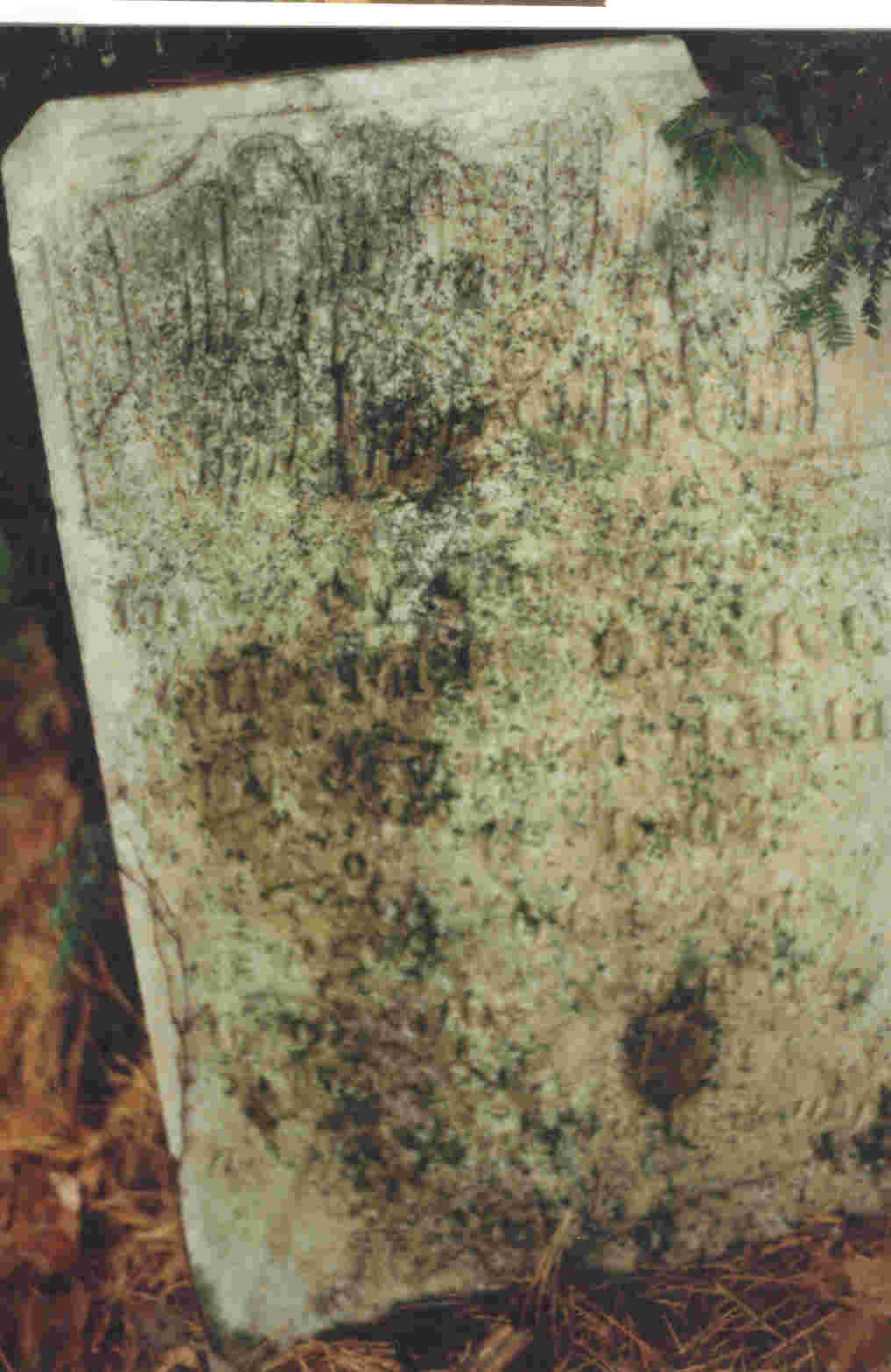 |
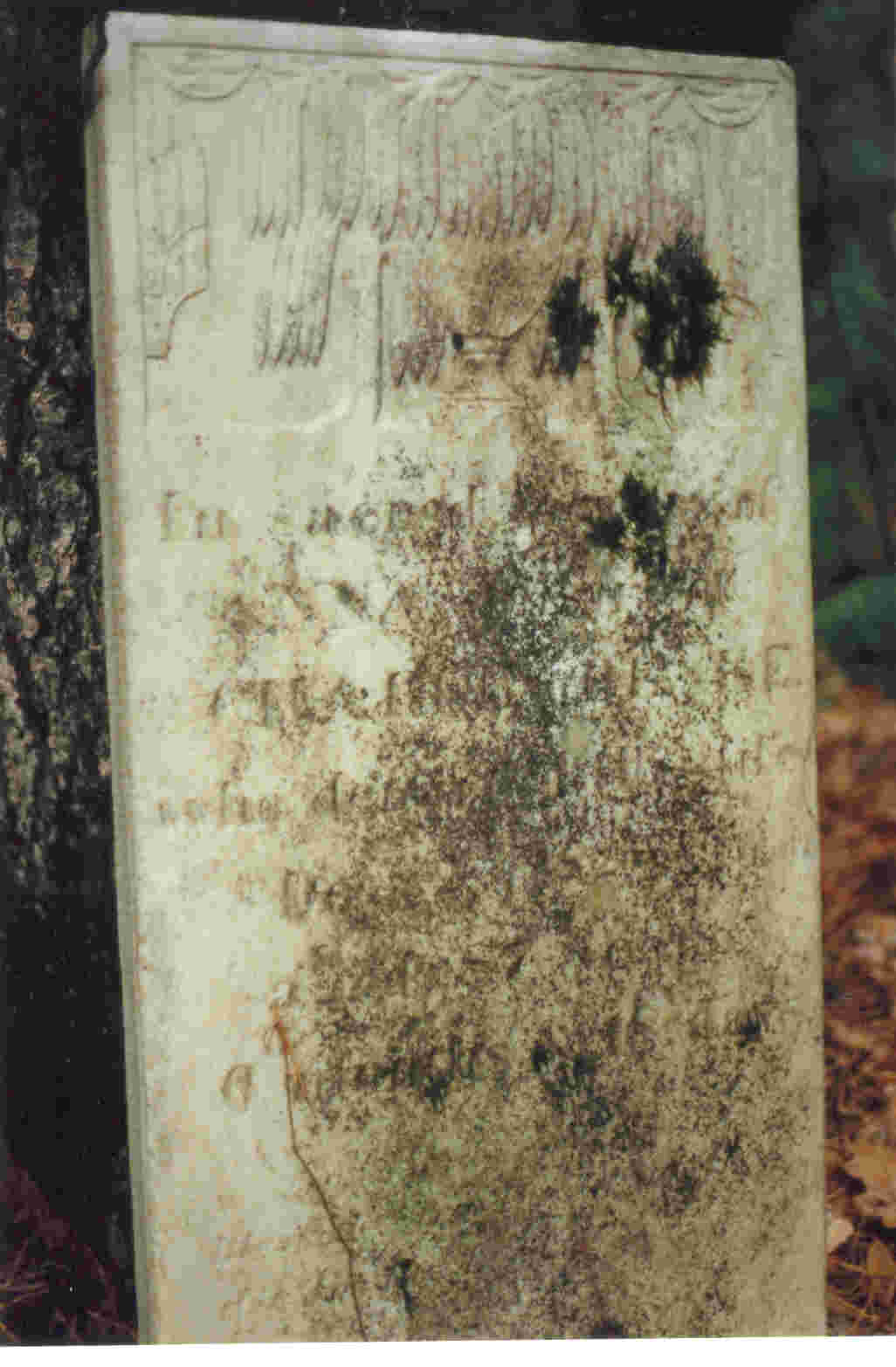 |
|
|
|
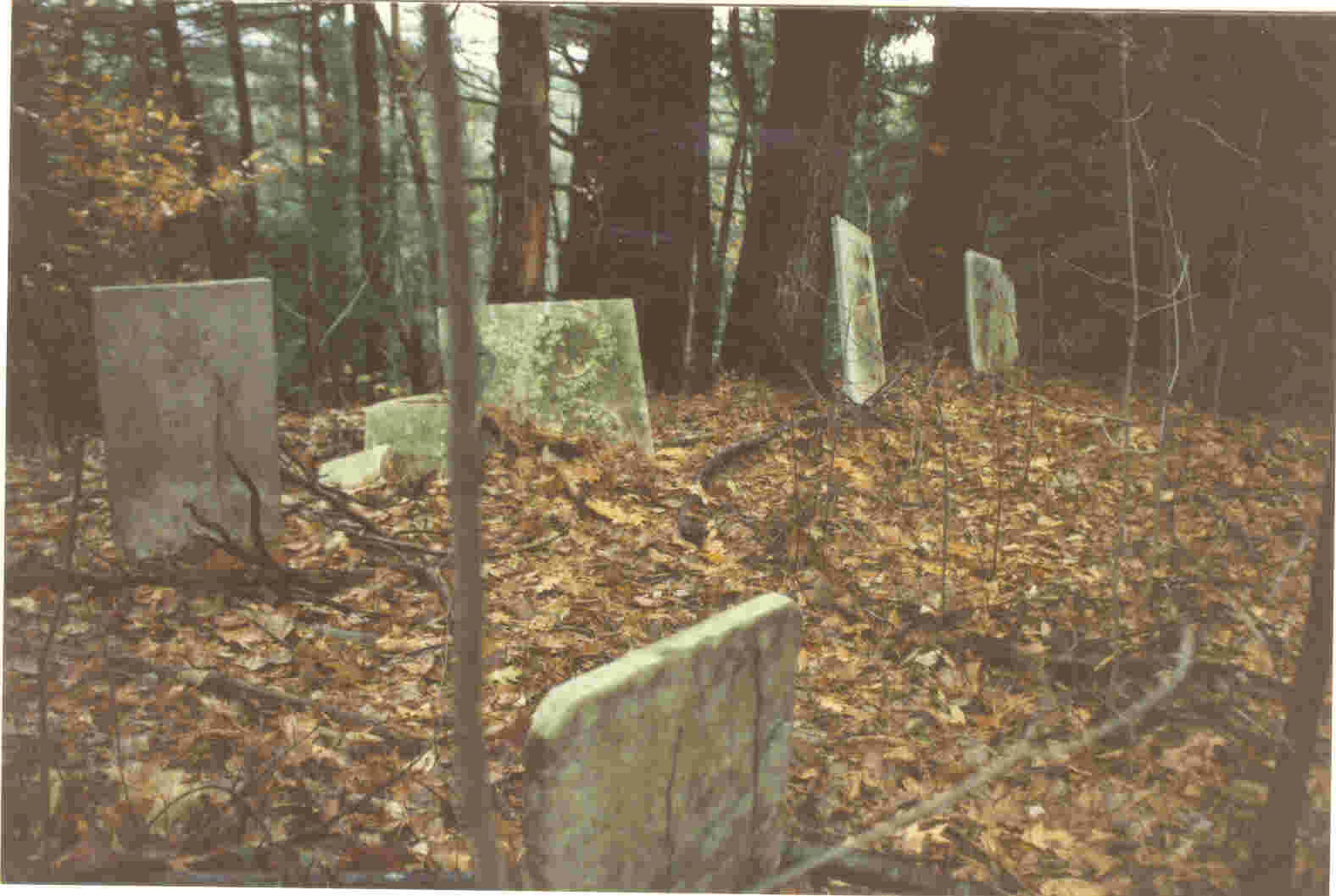 |
|
DAKETOWN
CEMETERY
|
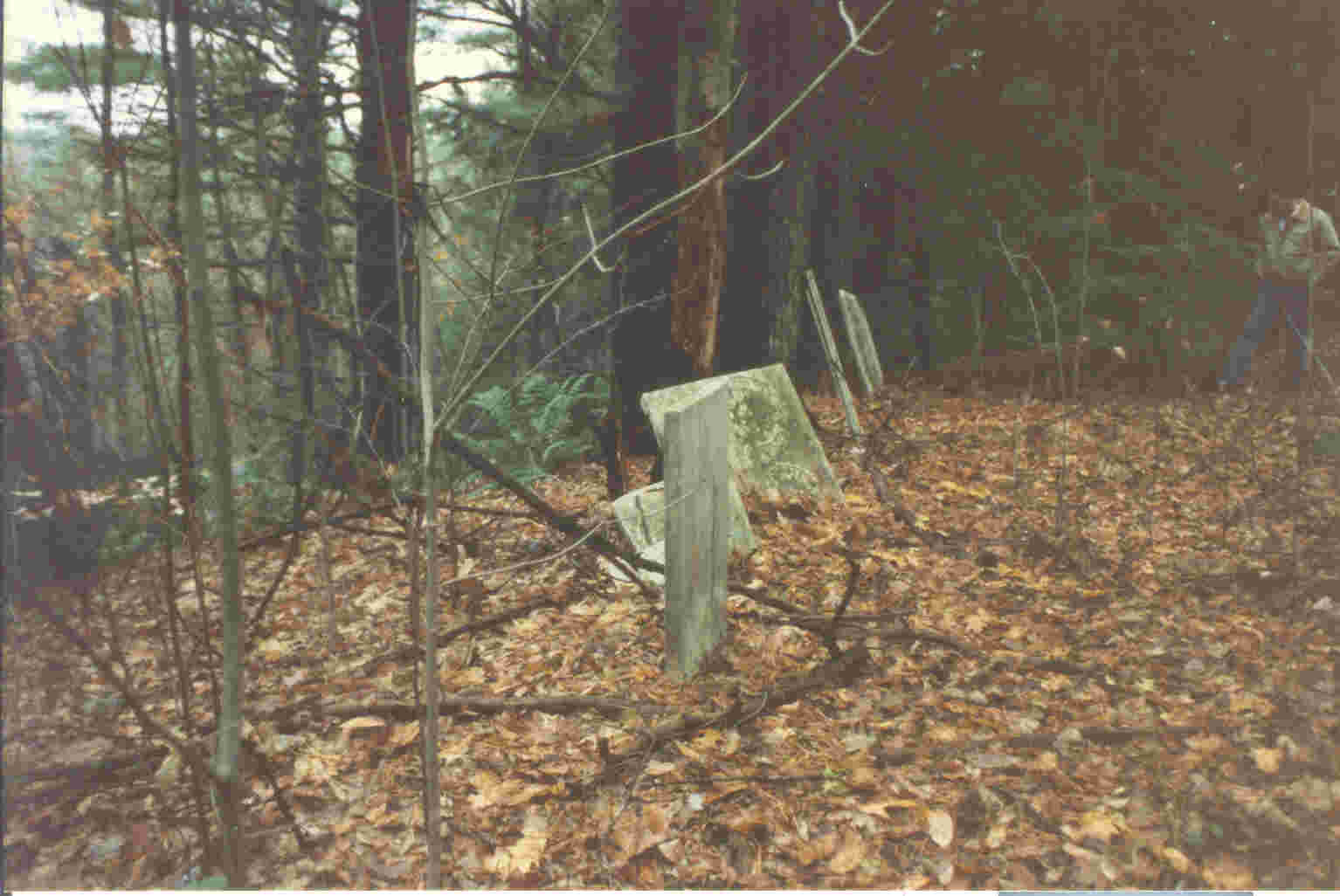 |
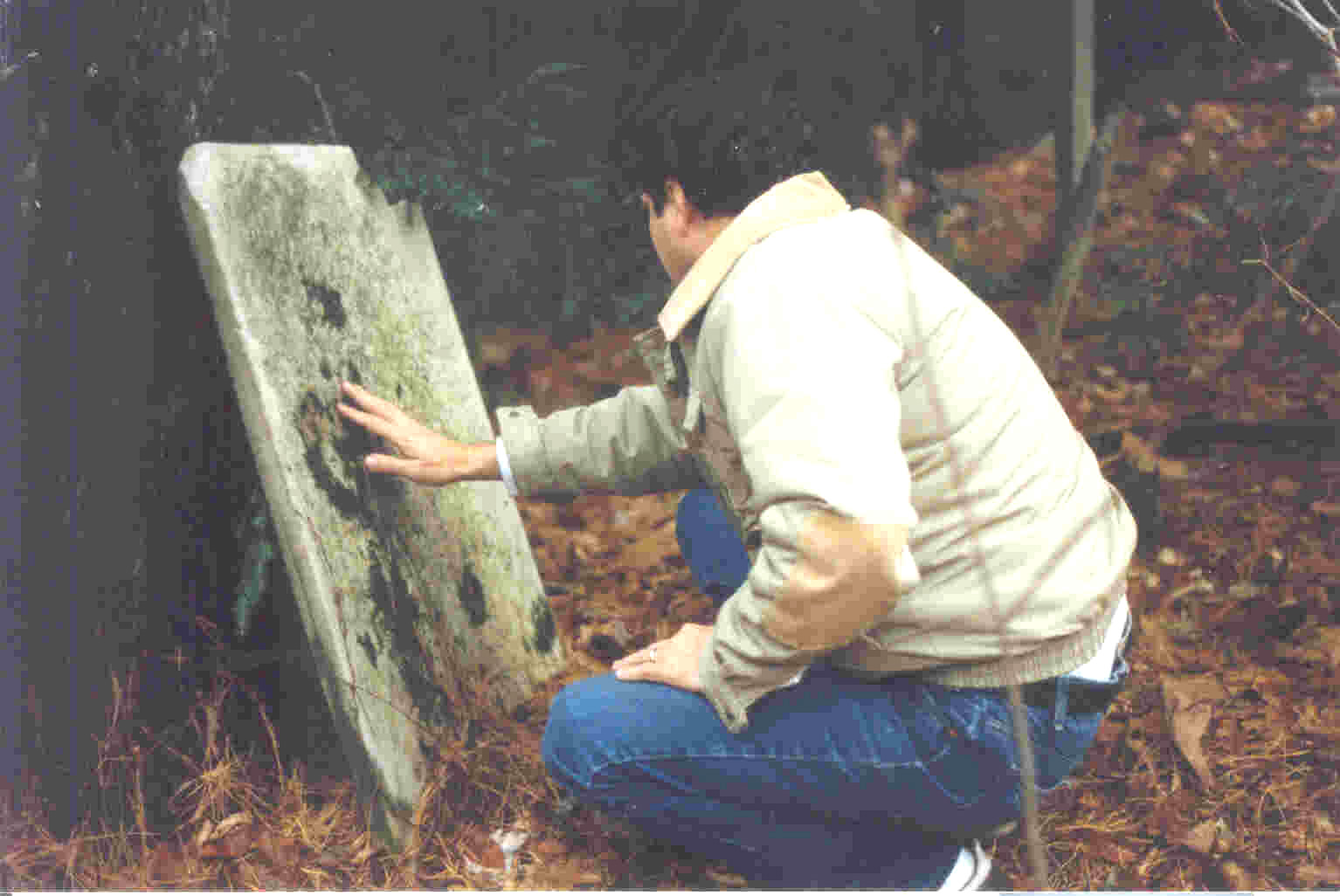 |
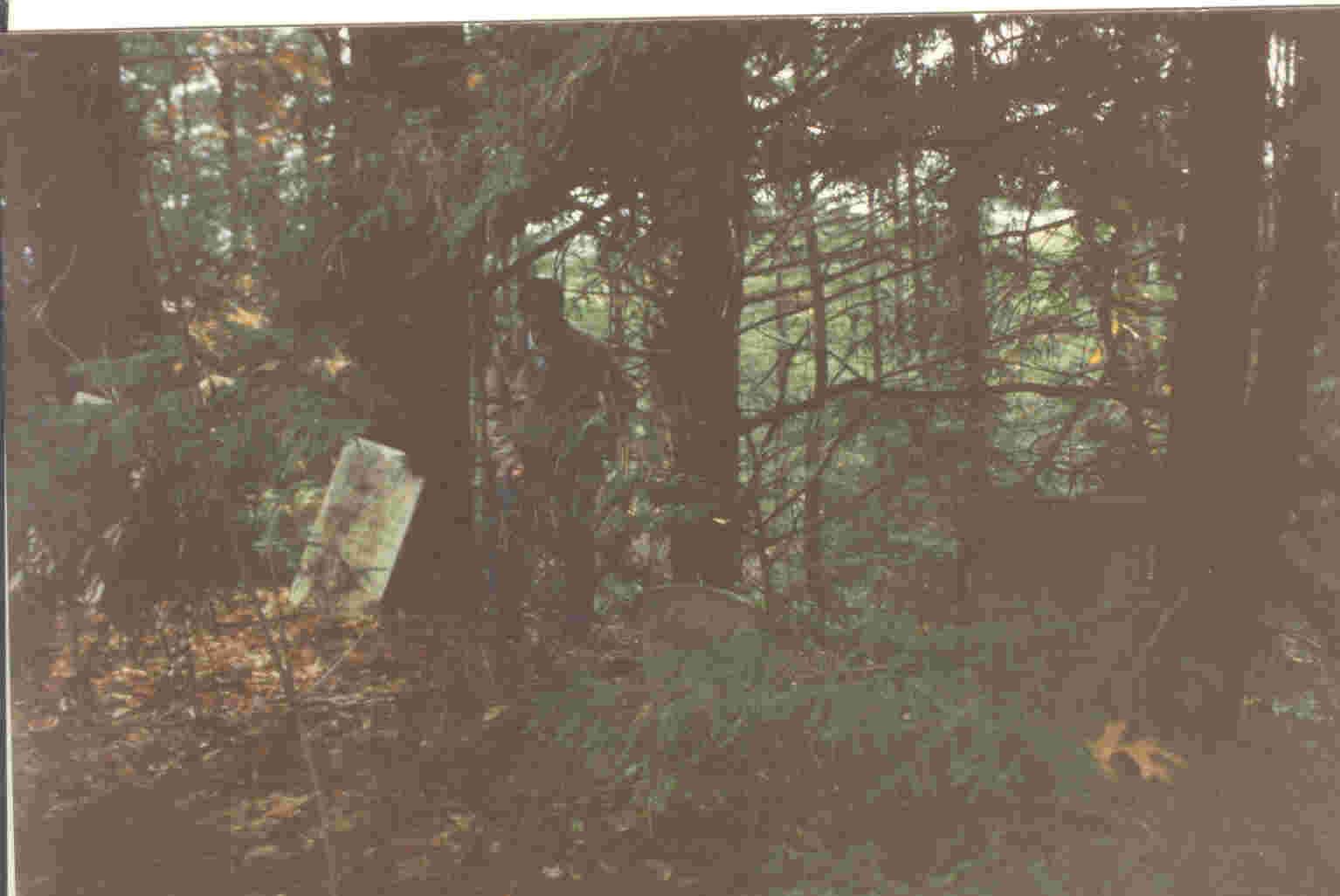 |
|
OVER
GROWN CEMETERY
|
INSPECTING
CHARLES DEAKE TOMBSTONE
|
VIEW
AROUND CHARLES TOMBSTONE
|
DAKETOWN PICTURES
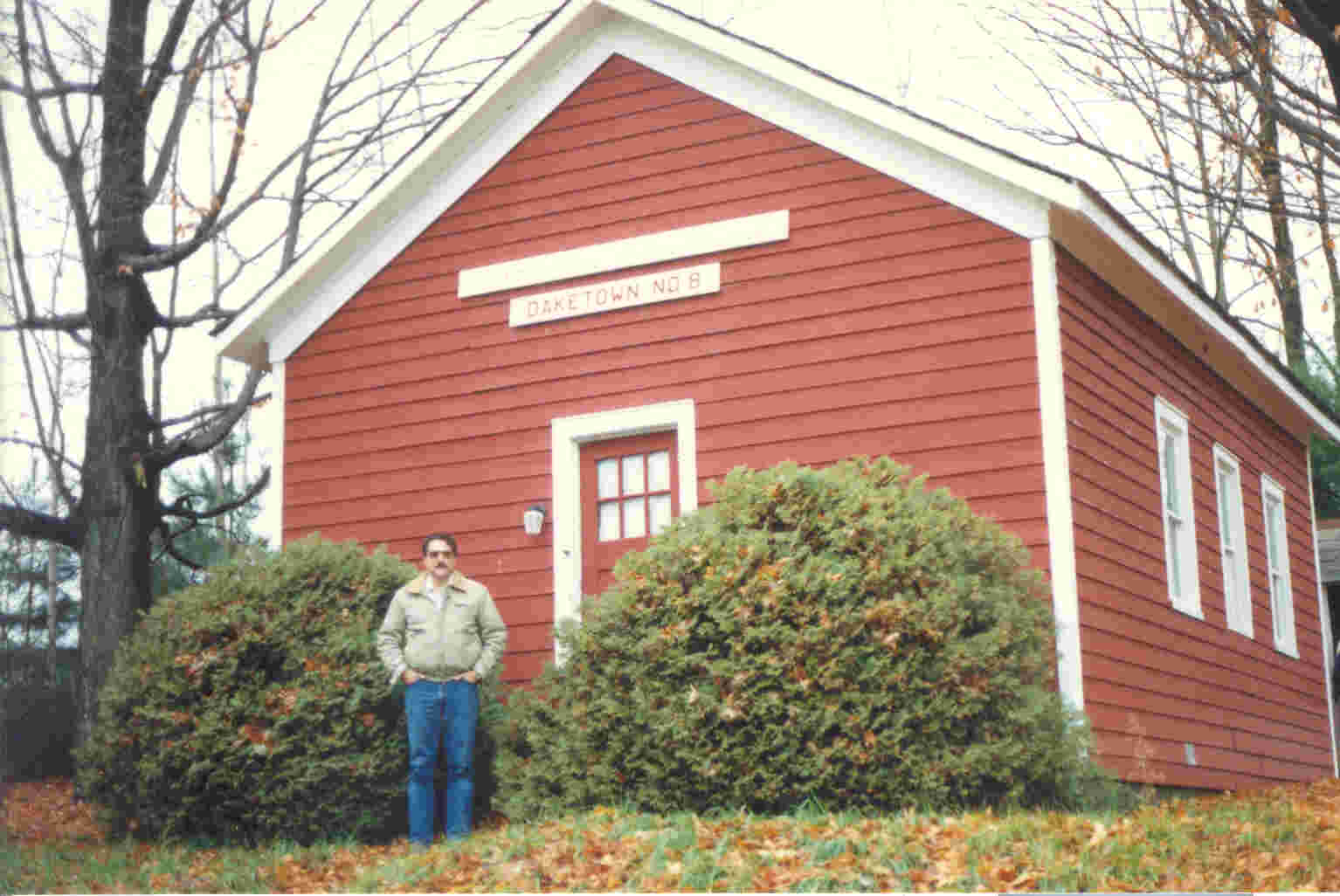 |
|
DAKETOWN RED SCHOOL HOUSE BUILT BY CHARLES DEAKE, JR. Closed June 1956 (Mary C. Steil last teacher) |